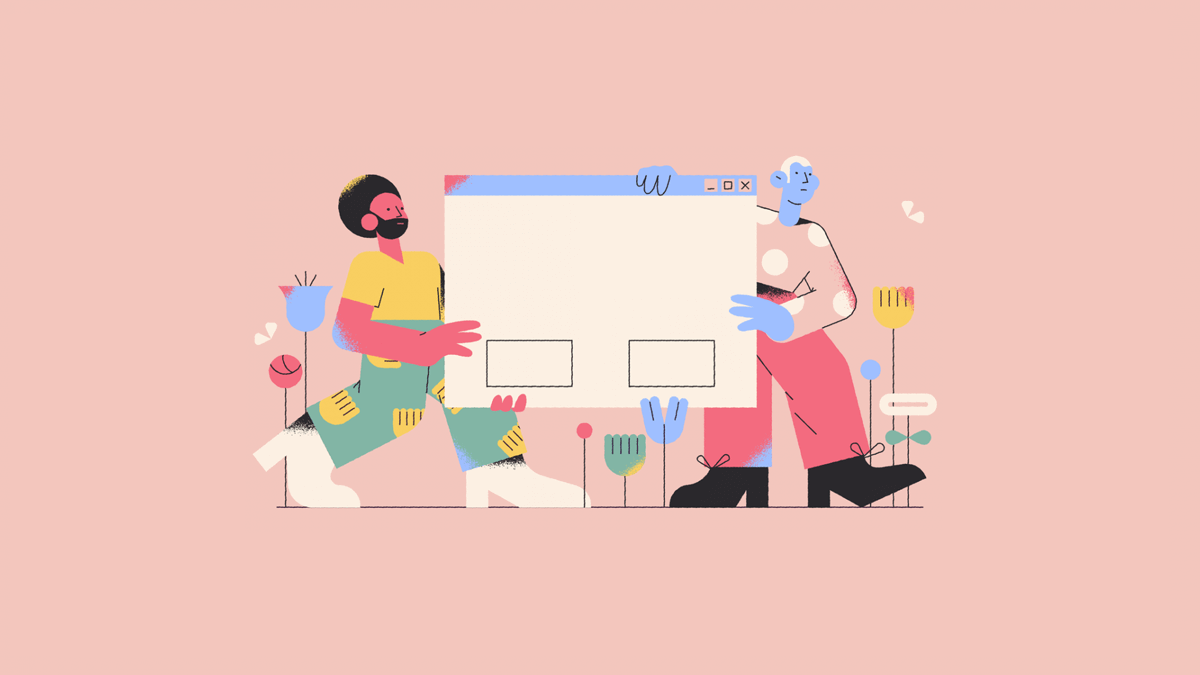
More and more people choose UI / UX design because they see themselves as sought-after specialists who come up with out-of-the-box, creative solutions for creating eye-catching and easy-to-use sites and applications. But many of those just starting out in web design are prone to mistakes the consequences of which negatively affect the perception of their work and themselves, reduce their productivity, and spoil relationships with clients.
I have worked in the design industry for over 12 years, going from rookie to creative director, and have learned a lot from these mistakes myself, as well as observing them in my colleagues and students. Later I realized that all beginner missteps are divided into two categories: professional and personal. The former include all those directly related to design – bad layouts, faulty edits, and other flaws. Personal mistakes affect the sphere of motivation and self-criticism. Let’s take a closer look at each of the two categories.
Professional
Unnecessary complication
Do people open your site to look at the beautiful illustrations? Or be surprised by an unusual menu? No, users go on sites to fill a particular need. For example, they’re hungry and they want to order a pizza. Aspiring designers like to complicate things that can be left “banal” or copied from other projects.
As you add each new design element, ask yourself if it brings a particular benefit to the person who’s going to be using your site. No need to invent a fifth wheel for the cart – make sure that your design remains clean, uniform, and understandable.
Lack of focus on key action
The site, as a good interlocutor, is always perceived better if it clearly articulates its purpose. Ask yourself what you offer, what path the user takes on the page, and what key actions they have to take. Efficiently direct them to this action. For example, you can use a five-second test. Briefly show your design to a friend and then ask them what they figured out about the site. Did they understand the main purpose as it was intended?
Visual noise
Remember that the amount of attention a viewer is willing to expend on a site is limited. Imagine this attention in the form of a glass of water. With each new design element, we sort of take a sip.
Beginner designers flirt with tools and make pages “noisy”, low-contrast, and oversaturated. Instead of a light-grey background, try making it pure white. When adding a new dividing line, try how the design would look without it.
Inconsistency
Often, every new page of a site looks like a new site. Therefore, when creating a new heading, a block of text, or a form, consider whether it is possible to use a ready-made block. Always, if possible, repeat the graphic techniques used previously. This will give the user a proper understanding of how the element works and speed up the development of your idea by the programmers.
Context-locked solutions
Designers love using large displays and the most accurate colour reproduction. Working at the monitor, we forget that our website or mobile application will be used in completely different, much more diverse conditions. The site will open in all possible browser sizes, from 320px to 2500+px. The mobile app will run offline, perhaps even be used on the run. Try to think ahead, and consider completely different ways of working with your product. And best of all, test more.
Personal
Self-realization by all means
Often beginners go the “I want to make it how I like it” way instead of listening to the client. This is understandable because, after graduation, we all want to enjoy our newly acquired skills – so we use them to the maximum. But at the same time, we often forget that our “beautiful” may run counter to the needs of the client. At one time, a simple truth came as a surprise to me: the client pays for the implementation of his own ideas. We help him in this, but we are not the final decision point. So, listen to your customers.
Unnecessary stubbornness
The first projects, especially those in which a lot of effort has been invested, are a personal achievement of the designer, they cannot be criticized. Be careful to draw a distinction between yourself and your work. To shake off the feeling of personal responsibility, give the layout to another person for evaluation, while you move on to other projects.
Too much attention to detail
Aspiring designers can get hooked on the part that they personally like. For example, the main illustration on the site, beautiful icons – anything that is of interest and value to the designer but is at odds with business objectives.
Ask yourself how any action you take will help the client’s cause. Is it really worth investing another 16 hours to improve one illustration on the site? What more important things can we do in the same amount of time? Perhaps it is more useful to quickly release the site, collect the opinions of a live audience, and then work on the details.
Ignorance of your price and value
You can, of course, work for free, but sooner or later it comes to wages. At this stage, beginners often get lost. There is a quick universal solution: divide your monthly payment by 168 and get the value of the desired reward per hour. Multiply this cost by the estimated duration of the project and name the final amount.
For example, you plan to make a business card site in 5 working days, i.e. for 40 hours. To start with, you would like to earn $800 dollars a month, which means that the cost of an hour of work is $4.7. Then such work can cost $190. Do not be afraid to add 20% as an insurance – something always goes wrong. The result is about $230.
Self-criticism
When a beginner starts to succeed, the initial joy is often replaced by panic. “After all, the design guru does it better!” I often hear. “My layouts suck, nothing comes out!”. Self-criticism often stops further development. Be as indulgent as possible to yourself, and constantly do something new. The good news is that even the best designers, when starting a project, are guided by new work in their field. Let self-criticism be a warm fire of motivation, not a destructive force.
The main advice I can give to beginners is to try and listen to themselves. Are you enjoying the new layout you’re working on? Happy with the overall solution? If yes, then just give yourself time – and everything will definitely work out.
Alexander Voitenko,
Design program director at Trinetix and program director of the UX/UI design course at DAN.IT education.
